There are several types of photographers, and many have come to be specialists at a certain type of photography, such as landscape photography. There is just something that touches the viewer when they see a photograph of a field of flowers or a churning sea. It can bring back memories or lead them off into their own fantasy world, and it’s all done with a simple photograph.
Different Types of Landscape Shots
There are generally two types of landscapes that come into mind: urban and natural landscapes. The two types are uniquely different, and both appeal to a different audience, and sometimes they appeal to the same audience. The ability of the photographer to capture a feeling or an emotion is what makes them unique.
Needless to say, you do not need to travel to far-off lands to create a landscape photograph. You have the ability to create a great photo without even leaving the comfort of your home. It is simple, to begin with, simple shots of your backyard or surroundings and practice capturing a moment that will be viewed as extraordinary.
Although traveling is exciting and there are great panoramic areas to create a simple shot, you can do it at home, but it just takes practice to find one great thing about your yard and capture it in a unique a kind moment with a photograph.
Landscape photography takes some work, and there is no simple way for you to just run out and take a unique picture. You want to take in the landscape and offer your imagination the ability to think outside the box. You do not want to have the same photo as all of the other photographers have taken before you; you want to play with angles, zooms, and color to make your photo become a totally unique area to an area that may be well-traveled. You want your photo to stand out to people, so they say, “Wow, I never noticed that before.” When you can accomplish this, you are certainly on your way to becoming a landscape photographer.
Natural landscape photos are seen quite frequently, and you know you have seen all of the great shots, like a still photo of the sky to ground lightning that creates a wonderful feeling in a black sky. Even the pictures of natural waterfalls or turbulent seas have gotten more than one viewer to stand back and hold their breath. Although we have seen many photos of natural landscapes, there are still photos that take our breath away with every capture of the moment that keeps us coming back for more. We have all tried to capture a moment like this, and that is because it creates a feeling in us that we want to experience over and over again.
The urban landscape is much different. Most of us take advantage of the stark lines and hard objects and never pay attention to. There are so many possibilities with urban landscape photography that the possibilities have become endless. Only certain people are usually attracted to this type of landscape photography, but it does not mean that you lose the attraction from those that enjoy the natural landscapes. There is so much to offer in an urban setting that the ability to make a picture unique is only limited by the imagination of the photographer and the ability to take in the emotions of the subject. The trick is in finding the shot, the one thing to focus on and take a picture of. If you have a keen eye, then urban landscape can hold many possibilities and make your pictures be able to speak volumes as they stand alone.
While you’re thinking of landscape photography, just think of the possibilities you have to touch someone in a way they have never dreamed of. You can choose the softness of nature and its beauty or the harsh surroundings of a big city and still give a sense of any feeling you wish to portray with just a simple change in your camera angle.
Capturing Images With Character
Landscape photography can be challenging, but it also has its rewards. You may think that visiting a popular vacation site and snapping a bunch of photos will have you dealing with a unique piece of art, but that is not the case. Many people feel that just because they are taking pictures in a beautiful area, they are creating works of art, but it’s just not true. They are only one person of many that have stood in the same spot taking the exact same photos at the exact same angles.
Landscape photography is more challenging than just simple picture taking. Everyone has the ability to see what a good subject is, but creating a unique work of art from it is another story, especially if it is a well-traveled location. When you’re taking photos of a subject that has been viewed thousands of times, you need to take extra effort to assure a unique shot and not take the shot from the same locations and same angles as the other photographers that have gone before you. You have to find the ability to change that location into a work of art that has never been seen before.
Here are just a few tips for capturing the character of a landscape.
First of all, you do not need to fit everything all in one shot. There are some landscapes that would require the use of a panoramic picture or wide-angled lens. This is great, but if your focus is on a subject in the center of that photo, the dimensions become very small, and you may not capture the feeling you were going after. Focusing on that one subject in the photo can bring more life to it and thus getting across the feeling to the viewer you were hoping for.
Second, if you want to take a unique shot, do not go to the same places that everyone goes to take your picture. This means, when you’re on the lookout, you are surrounded by many people that are capturing their photos at the same exact angle. You may need to search around, but looking for a place to shoot the photo could mean all the difference between a photo that comes a dime a dozen and a photo that will stand out as wonderfully unique and keep the viewers coming back more. This does not mean going out and breaking all laws to take a picture; it simply means looking for an area that is not as highly populated to get the shot you have been looking for.
The next tip is to find a way to use the foreground to your advantage. Anyone can take a picture of a field of flowers, but what if you took that same picture while standing on the opposite side of a stream or using a big boulder as a foreground to take that picture. The best thing to do is to keep in mind that you are not the first person to take this picture but just one of many. This will allow you to take up a more creative thinking pattern when scouting your shot.
Finally, take all of the weather conditions into consideration. The balance of light on a subject is important, and all of the great photographers know that. What is it that can make your photo stand out? You can look at weather, clouds, rainbows, or anything that will make your picture unique. Being a landscape photographer means thinking in a more creative style to capture the images that will last in your viewers’ memories.
Taking the time to look for that one great shot are what will make you stand out from the others, and having someone look at your picture and comparing their photo to it is fun and exciting; they will all be talking about how your picture became so much more than just a mere photo. Taking time is not a waste because it will allow you to capture a unique moment and the time spent will be well worth it.
Making the Most of the Night or Daylight Sky
Your photography skills are not the only thing that makes a good landscaping photo. You will also need a bit of help from nature. You may have the skills to take the perfect shot, but you may still end up with a boring photo if the conditions are wrong.
Any photographer dealing with landscaping has to work with the weather. Some images will require some cooperation from the weather, especially if you are just passing through as a tourist and do not have time to hang around and wait out the conditions. Even the most skilled in the profession have to deal with Mother Nature.
Even in the best weather conditions, you may have to rely on your imagination to take a good photo. The bright sunny sky, although beautiful, can often hinder a photo’s beauty by drowning out the natural colors. You may have to think creatively and use the foreground to make your photo pop and draw the attention of the viewer.
On the other hand, a cloudy day could become your greatest asset. The formations of the clouds are never the same, and you can create a great shot of the area many times and have each photo look like a unique work of art.
When you find that your day has become clouded, here are a few suggestions to make your photo stand out.
- Using your polarizer as a pair of sunglasses can greatly change any photo; you can turn a normal cloudy day into a work of art. You will want to take care when using your polarizer and play with the different effects. This way, you will be sure to find the effect you’re looking for.
- Change the horizons. Every photographer knows the rule of thirds, but you can create a unique picture by just changing the horizon. You can dwarf the landscape and create a focal point in the clouds. The choice is up to you, but you can create a different feel with just a simple change in the position of the horizon.
- Use the clouds to create a feeling. Each cloud is unique, and you can use them to create a feel and offer a visual flow in your photograph. You can use this example by having a tree in the foreground. The tree is your subject, and all of the clouds tend to draw your eye and lead it to the right. While the clouds lead the eye to the right, it is a good idea to put your subject on the right side of the photo, thus creating a composition that took no hard work on your behalf.
- Have patience. As a landscape photographer, the main thing to remember is it takes patience. You will have to take the time to wait for the exact moment that will make your picture-perfect. Mother Nature moves at her own speed, and you will have to learn to live within this range. You may find that you are waiting out hard black clouds or waiting for the chance to capture the perfect rainbow; in any profession, there are certain things that you will have to deal with, and being a landscape photographer means you will have to learn patience when dealing with Mother Nature.
- Choose the right light. The best lighting conditions are usually late afternoon or early morning. This lighting condition creates the best use of light and color. The sky also starts to change in color and can give a great effect to your photos. Ask any professional photographer that takes landscape photos, and the answer will always be the same. The use of the mid-day sun has the tendency to drown out the natural color of your subject and can create a feeling that you were not going for. The later afternoon can offer natural soft changes that are warm and inviting and create more moods in your photos.
So as you can see, a professional-looking landscape photograph can be reached, and you will soon see the compliments are starting to reach your ears. You can give each person the feeling of something great when you have the right angles, lighting, and most of all, patience. You know that it will take some dedication on your end, but becoming a great landscape photographer will be your bonus.
The techniques used in outdoor photography are much different from indoor photography, and the lighting sources for good results are different. Once you have grown past the hobby photographer stage, you will know how to use all of your equipment in a professional manner. Once you know how to use the equipment, you will see that taking great landscape photos is no longer a mystery. You will be able to deliver great pictures that offer a wonderful variety of emotions to your viewers.
You can easily learn to offer a great message through all of your photos that will give the viewer an emotional connection to your work. You can also easily change the mood of a picture by the right angles and the use of light. You will see that creating a mood of fantasy, dream, or even shock can be created with the simple use of light. The use of shadow can also create a different mood for each picture.
If using only black and white film, you need to know that composition is an important part of this type of photography, and becoming a master of shades and tones is important. It is very demanding for a photographer, but the results can be quite amazing. Just know that the subject will need to stand out, and the shadowing is how you can accomplish greatness.
Trying your luck at black and white photography can be very rewarding, and playing with the shadows and angles is the key to creating the look you are going for and the mood you want the viewer to feel. This is a difficult task because the use of black and white can take away emotion that you can only get with colored pictures. Natural elements blended with the man-made forms of buildings or bridges can create a wonderful contrast and create a character in your photographs. Showing the sharp angle of the man-made subjects alongside those of the soft features of nature’s beauty can create a work of art that will keep the viewers enthralled.
Using different angles can help photographers capture effects that will easily create a certain emotion they want from the viewers, and candid shots are much more easily captured on color film. Many photographers have chosen to use digital cameras when trying to capture some events because the use of the LCD viewer screen allows them to evaluate the quality of the photo before deciding whether or not they want to take it to print. The use of the digital camera has become more and more popular due to the fact that you can take hundreds of photos that will add no extra cost to the photographer, they can easily be deleted and retaken. The photographer has the ability to change angles, lighting and anything else without the added cost.
Now that we have covered just what it takes to take the great shots, you need to put you as an armature photographer in some work. You will need to learn the basic operations of all of your equipment so that you know how to use it properly. Learn about angles and how to change the mood of your picture with each angle. Try to study your focus points and learn how pictures change with the time of day and your lighting. Don’t forget to scout out the best locations and vantage points so you can breathe a little life into your photos.
Get Inspired First
Before jumping out, have a look at some truly inspiring landscape photos. Perhaps they will help you to open your horizons to more ideas. Here are a few truly stunning shots that will make you want to grab your camera and go out on a shooting session!
Finally – Get the PRO Look Easily
It takes years of experience, dozens of camera settings, and virtually millions of shots until you manage to reach the stage where you will be bragging with the results, so until then, try to make photos of interesting landscapes and object and simply process them with one of the Professional Photoshop Actions…
Take a look at the views you want to recall.
A good landscape shot takes at least as much compositional work as still life, except that you have to move your body instead of your subject. There are many ways to arrange the elements in your picture for the effect you want—the key takes time to consider the area. And you can walk about.
Make up your scene.
You’re planted in front of a spectacular view. But you just took a photo, and none of the majesties you’re looking at is showing up on your phone. What went wrong, huh? The first thing you need to review is your composition. The scenery is all around you, but you’re always going to have to frame your shot.
Naba Zabih, a wedding photographer who also deals with dramatic landscapes, says that landscape photography is “like a game of forms.” She says, “You can sort of creating a balance—if a mountain makes a triangle shape, you might be able to balance it with a circle shape on the side. It doesn’t matter how amazing a landscape is if you can’t mathematically look at it and break it down.”
And there’s no need to hurry around. Jeff Carlson, a seasoned landscape photographer, says, “In one way, the landscape can be easy because not much is going to change—your trees are not going to run out of your mountains. So you can be a little more purposeful in framing and composition.” His tips: take note of the large shapes, the strong lines, and pick your focal point.
Zabih reminds aspiring landscape photographers that “even though it’s a landscape, there’s still a theme you should be focusing on. If you’re photographing a mountain, your attention shouldn’t be on a random patch of grass to the left because that’s where the eye is going.”
One fast tip of landscape photography is to consider adding some layers in the foreground to create the focal point and prevent your shot from going flat.
Samuel Nute, a photographer based in the Pacific Northwest, points out that “if you’re photographing a mountain range, you’re going to want multiple layers of different colors and contrast, allowing the picture to have more dimension, more life than just a flat image of the mountains.” Kilen Murphy, a wedding and landscape photographer, always asks himself, “Is this the best thing I can do within this frame, or is there maybe some kind of feature that I can add to it to give it more depth?” And when you shoot a digital camera, there’s no excuse not to pause and review your shots as you go.
There are a variety of ways to bring the layers in. Carlson says:
“Maybe there’s a little puddle left out of the rain the night before. If you get really low and close to the puddle, it’s going to give you a nice reflection of the mountains. There are a lot of different ways to put your camera down to the ground, get up higher, and find out how to get a different perspective even if the scene is relatively unchanged.”
“Try a few combinations and explore your choices.”
Similarly, take advantage of any available lines to emphasize both depth and emphasis in your shots: Nute suggests that you use items like fences, treelines, or rivers to attract the viewer’s eye to the focal point of your picture. Find those lines by walking around your point of view. See if you can find a higher view or a low angle, such as letting you catch more of the drama you’re experiencing. You may also use the Thirds Rule to establish a sense of balance in your frame.
Light: the true moving target.
The thing that moves when you take pictures of the scenery is light. Between the weather and the shifting position of the sun, you’re going to want to think carefully about the time of day you’re working in and what you’re prepared to catch. There are all kinds of helpful applications that will help you prepare, but once you’re out, you’ll need to be able to deal with whatever the environment gives you.
Carlson says, “The greatest, best advice—which is also the hardest—is that if you want to do landscape photography, you have to be there when the light is fine. It sounds pretty simple, but that could mean you’re waking up at four o’clock in the morning, heading to your destination, setting up in the dark, and waiting for the sunrise to happen, because sunrise and sunset are when you usually get the most dramatic, most fascinating light.”
“When you shoot landscapes,” says Carlson, “you’re aiming for more than just ‘there are some mountains here.’ You’re waiting for what the weather is going to do, what the sunshine is going to do, to get a perfect picture. They name the early hours and the dark hours the goldn hour, because all the light is coming at an angle rather than coming straight down.
If you’ve got high clouds, they’re illuminated from below, and you get a lot of the great colors like purple and orange and red streaks. That makes a picture of the landscape really pop. You can get a perfectly good shot in the middle of the day, but when you’re capturing a great landscape, you’re always going to have a more epic look.”
A notice about the lenses and positions.
Derek Boyd, a Portland-based photographer, has a few tips on the best lenses for landscape photography. He says, “Most photographers would recommend that amateurs start with 35mm or 50mm. 35mm is a perfect way to go for photographers who want to do landscapes.” Getting a little more precise, he says, “You’ve got your big focal lengths; anything 30mm or lower is going to be wide.”
These lenses allow you to capture a deep focus on a wide scene, but they could also distort closer shots:
Boyd says:
“If you get really close to someone with a large lens, it makes her head look really high, and everything in the background looks really small—you almost get the fisheye effect. With larger lenses, you don’t have a shallow field depth, or you don’t have much.”
Carlson states that amid these limitations, you’re going to want a wide-angle lens if you’re looking for epic, wide-ranging scenery. “Starting with an 18mm or 12mm lens, maybe even an 8mm lens,” he says, “just let you bring more into your frame.”
If you’re taking landscape photographs, you may also want to bring some extra tools. Carlson suggests a tripod so that you can play with shutter speeds, do long exposures, or film at a higher aperture. He adds, “You want your scene to be crisp and clear—you want the mountains, miles, and miles away, to be in focus. But you’re going to want something that keeps your camera steady.”
When you set up, bring any extra lenses that you might need, pack a tripod if you want to play with long exposures, and pack the gear that will protect you (and your equipment—a good camera bag is a good choice) from the weather.
And then, think where you’re going and where you’re going to try to set up your shots. Nute indicates that photographers are trying to find locations off the beaten track. How is that? Stay alert, and be prepared. He’s going to carry his camera along as he walks. “Obviously, there are some objectively nice scenery places around the world that everybody is going to,” he says, “but this links back to having a unique view of a common point of view or popular destination—putting your own spin on it. You’re trying to find your own look. You’re trying to locate the rare shot that people haven’t already found.”
It’s a big world out there. Just bring your camera and your cautious eye, and see what you can do with the most beautiful corners of it.


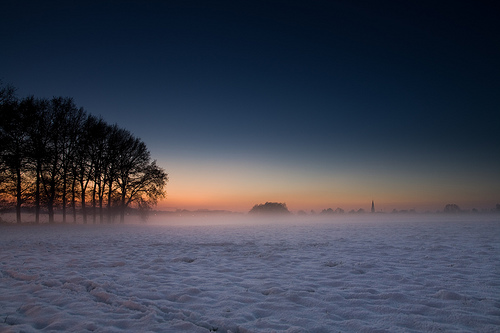
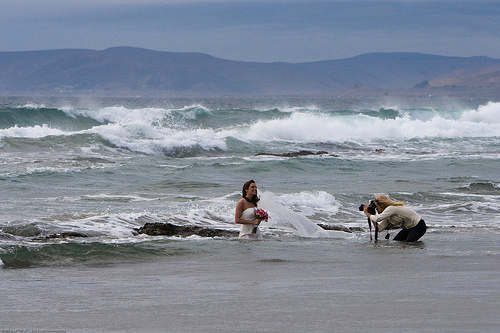



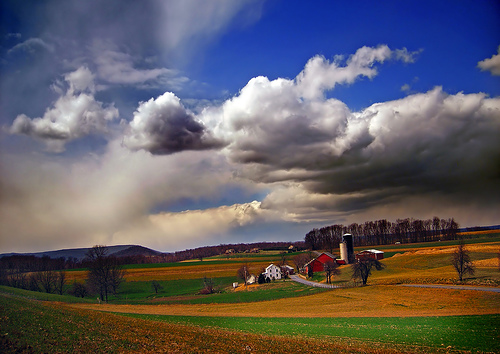
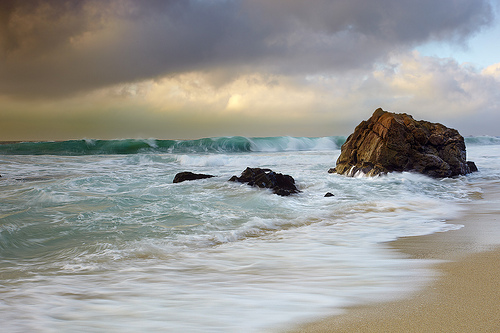
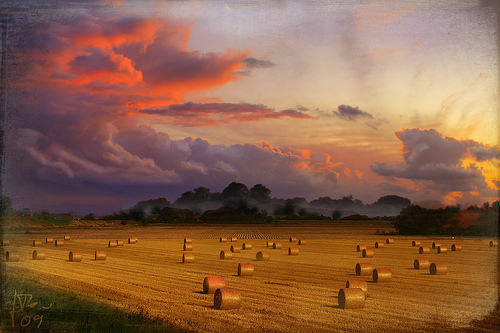
As and aspiring landscape professional I appreciate this post very much. Good info and the pictures you chose were great as well. Thanks!
Wow great photos !!
The photos are definitely great. There are so much energy in them so i can feel it.